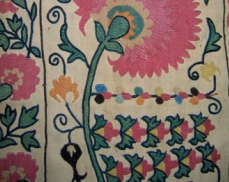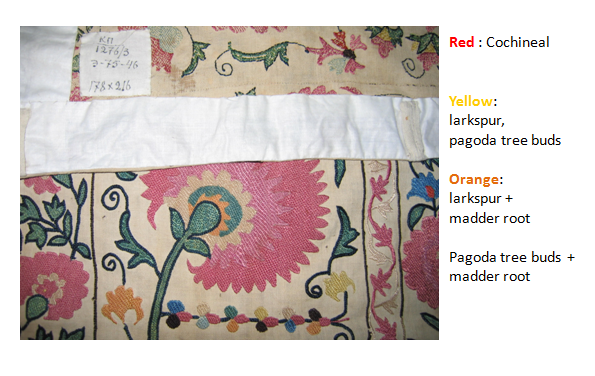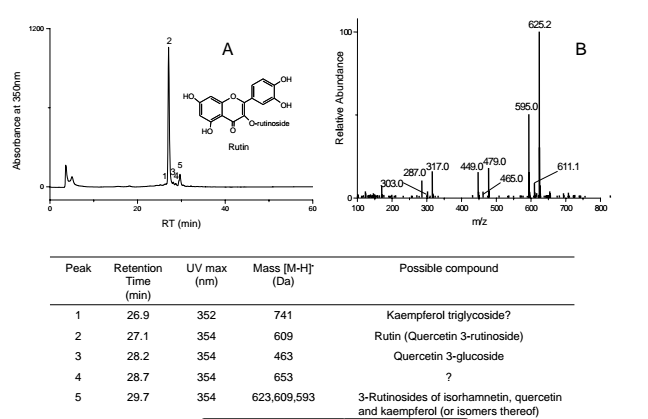MAA КП1276/3, embroidered suzani, central Asia (19th century)
Artifact Information
Suzanis are large, embroidered hangings or coverings that originated centuries ago in what is now Uzbekistan and neighboring parts of Central Asia. Typically they were sewn by village girls, using dyed silk threads, and became an important part of the girls’ marriage dowries. Most of the surviving suzanis date to the late 18th and 19th century. the suzani with flower embroidery was thought to have been created in the mid-19th century[1].
The Museum of Applied Arts, Samarkand, Uzbekistan: suzani (КП1276/3)
Summary of results
Multiple threads (equal or shorter than 0.5 cm) were removed from the back of the suzani. It was found that the pinkish red thread was dyed with cochineal, an orange sample was dyed with larkspur and madder, another orange sample with pagoda tree buds and madder. Yellow threads were dyed with pagoda tree buds and larkspur.
HPLC profile
Identified compounds
References
[1] Xian Zhang, Richard Laursen and Svetlana Osipova (2005) "Analysis of dyes in some 19th-century Uzbek suzanis"; Dyes in History and Archaeology To be published.


